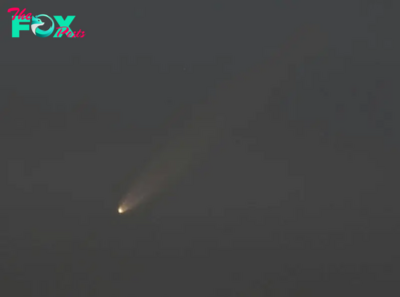Science
Intense solar storm opens '2-way highway' for charged particles, sparking rare auroras on the sun
Auroras on Earth occur when storms from our sun engulf our planet — and in a rare cosmic feat last April, our planet returned the favor.
The sun's wind often punches into Earth's protective magnetic field, or magnetosphere, and forms a bow shock on the sunward side of the field while detouring around our world — not unlike the way waves move when a ship is cutting through water. This is classic solar behavior.
On April 24, 2023, however, something peculiar happened. This is when a surge of charged particles blasted from the sun and lit up skies as far south as Arizona and Arkansas as well as parts of Australia and New Zealand. Unconventionally, these particles momentarily switched off our planet's bow shock, an anomaly that opened up a "two-way highway" through which charged particles also flew from Earth to the sun, where they sparked a solar light show. Compared to the sun's brightness, however, those auroras were likely far too dim to see.
"Particles trapped by Earth's magnetism suddenly had an escape — a direct path to the sun!" NASA posted last week on social media.
The "highway" was created largely due to a plasma-rich component of the solar wind called a coronal mass ejection (CME), which typically travels faster than the speed at which magnetic waves known as Alfvén waves move through plasma. That speed is known as the Alfvén speed.
Related: Powerful solar eruption temporarily rips 'tail' off Earth's magnetosphere
But during the April solar eruption, NASA's Magnetospheric Multiscale spacecraft recorded the latter to be faster, which caused the bow shock to temporarily disappear. It was by Alfvén "wings" that magnetically connected our planet to the portion of the sun that had recently erupted, NASA said.
-

 Science6h ago
Science6h agoHere’s What Trump’s Win Means for NASA
-

 Science3d ago
Science3d agoWhy Risky Wildfire Zones Have Been Increasing Around the World
-

 Science3d ago
Science3d agoIt’s Time to Redefine What a Megafire Is in the Climate Change Era
-

 Science4d ago
Science4d ago4 Astronauts Return to Earth After Being Delayed by Boeing’s Capsule Trouble and Hurricane Milton
-

 Science5d ago
Science5d agoThe Elegance and Awkwardness of NASA’s New Moon Suit, Designed by Axiom and Prada
-

 Science1w ago
Science1w agoSpaceX Launches Its Mega Starship Rocket. This Time, Mechanical Arms Catch It at Landing
-

 Science3w ago
Science3w agoYou Won’t Want to Miss October’s Rare Comet Sighting. Here’s How and When You Can See It
-

 Science1m ago
Science1m agoA New Spacecraft Could Help Determine if There’s Life on a Moon of Jupiter



























